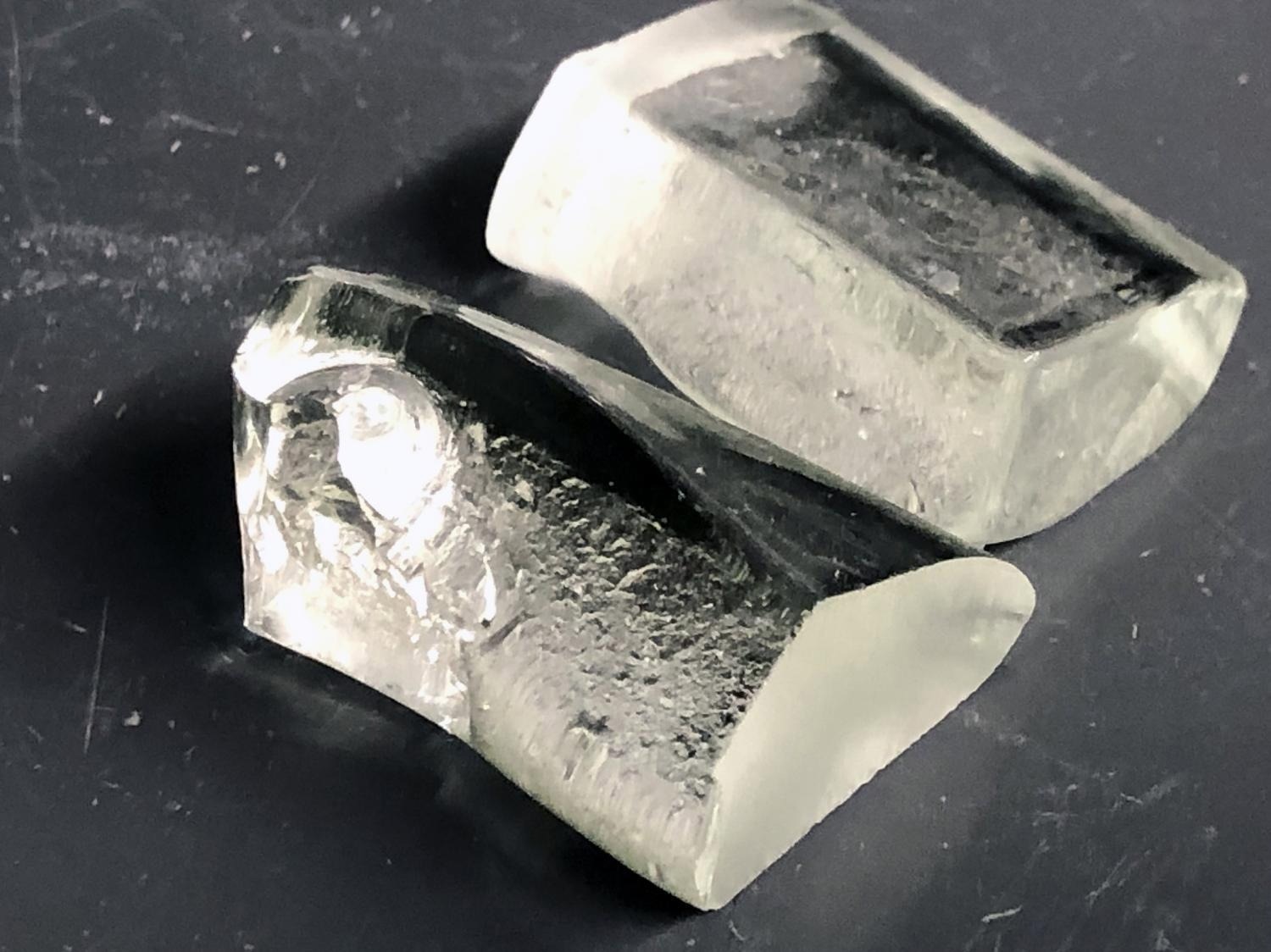Across the globe, glass manufacturing produces a minimum of 86 million tons of carbon dioxide annually. A new kind of glass promises to cut this carbon footprint in half.

A sample of LionGlass, a new type of glass engineered by researchers at Penn State that requires significantly less energy to produce and is much more damage resistant than standard soda lime silicate glass. Image Credit: Adrienne Berard
The invention, known as LionGlass and engineered by researchers at Penn State, needs considerably less energy to produce and is highly damage-resistant compared to the standard soda lime silicate glass. The research group has filed a patent application as an initial step toward bringing the product to market.
Our goal is to make glass manufacturing sustainable for the long term. LionGlass eliminates the use of carbon-containing batch materials and significantly lowers the melting temperature of glass.
John Mauro, Study Lead Researcher and Dorothy Pate Enright Professor, Materials Science and Engineering, The Pennsylvania State University
Soda lime silicate glass is the common glass that is utilized in daily items right from windows to glass tableware, and is made by melting three main materials: soda ash, quartz sand, and limestone. Limestone is calcium carbonate, and soda ash is sodium carbonate, both of which liberate carbon dioxide (CO2), a heat-trapping greenhouse gas, as they have been subjected to melting.
“During the glass melting process, the carbonates decompose into oxides and produce carbon dioxide, which gets released into the atmosphere,” stated Mauro.
However, the bulk of the CO2 emissions has been derived from the energy needed to heat furnaces to the high temperatures required for melting glass. With the help of LionGlass, the melting temperatures have been decreased by around 300 to 400 °C, Mauro explained, which results in an approximately 30% reduction in energy consumption than the traditional soda lime glass.
The scientists stated they were astonished to find that the new glass, named after Penn State’s Nittany Lion mascot, possesses considerably higher crack resistance than traditional glass.
Few of the team’s glass compositions consisted of such a powerful crack resistance that the glass would not crack, even under one kg-force load from a Vickers diamond indenter. LionGlass is at least 10 times as crack-resistant as standard soda lime glass, which develops cracks under a load of around 0.1 kg force.
The scientists described that the limits of LionGlass have not yet been discovered, because the maximum load enabled by the indentation equipment has been reached.
“We kept increasing the weight on LionGlass until we reached the maximum load the equipment will allow. It simply wouldn’t crack,” stated Nick Clark, a postdoctoral fellow in Mauro’s laboratory.
Mauro explained that crack resistance is one of the most important qualities to test for in glass, as it is how the material ultimately fails.
Over the years, glass develops microcracks near the surface, which turn out to be weak points. When a piece of glass breaks, it is because of the weaknesses caused by present microcracks. Glass that is resistant to developing microcracks in the first place is particularly beneficial, added Mauro.
Damage resistance is a particularly important property for glass. Think about all the ways we rely on the strength of glass, in the automotive industry and electronics industry, architecture, and communication technology like fiber optic cables. Even in health care, vaccines are stored in strong, chemically resistant glass packaging.
John Mauro, Study Lead Researcher and Dorothy Pate Enright Professor, Materials Science and Engineering, The Pennsylvania State University
Mauro believes that the enhanced strength of LionGlass means that the products made from it could be lighter in weight. Since LionGlass is 10 times more damage resistant compared to present glass, it could be considerably thinner.
We should be able to reduce the thickness and still get the same level of damage resistance. If we have a lighter-weight product, that is even better for the environment, because we use less raw materials and need less energy to produce it. Even downstream, for transportation, that reduces the energy required to transport the glass, so it's a winning situation for everyone.
John Mauro, Study Lead Researcher and Dorothy Pate Enright Professor, Materials Science and Engineering, The Pennsylvania State University
Mauro notes that the research group is still evaluating the potential of LionGlass. They have filed a patent application for the complete family of glass, which implies that there are several compositions inside the LionGlass family, each with its diverse properties and possible applications.
Currently, they are in the process of exposing several compositions of LionGlass to an array of chemical surroundings to study how it reacts. The outcomes gathered will help the team develop a deeper knowledge of how LionGlass could be utilized across the world.
Mauro stated, “Humans learned how to manufacture glass more than 5,000 years ago and since then it has been critical to bringing modern civilization to where it is today.”
Mauro added, “Now, we are at a point in time when we need it to help shape the future, as we face global challenges such as environmental issues, renewable energy, energy efficiency, health care, and urban development. Glass can play a vital role in solving these issues, and we are ready to contribute.”